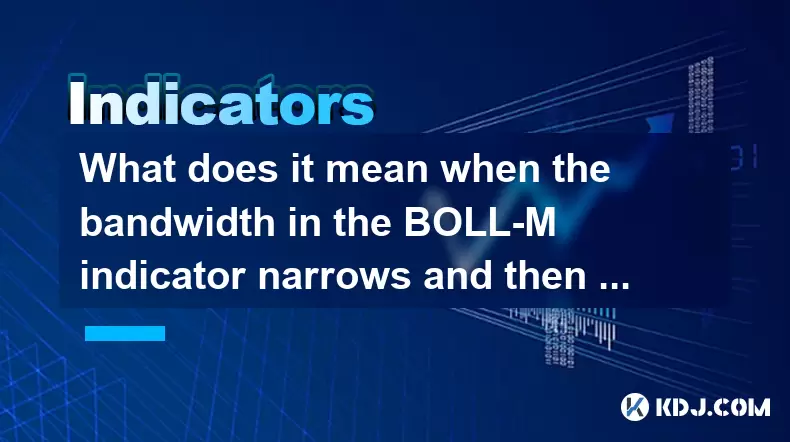-
 Bitcoin
Bitcoin $114800
-0.70% -
 Ethereum
Ethereum $4740
0.44% -
 XRP
XRP $3.018
-0.53% -
 Tether USDt
Tether USDt $0.9998
0.02% -
 BNB
BNB $863.0
-2.82% -
 Solana
Solana $205.2
1.19% -
 USDC
USDC $0.9999
0.00% -
 Dogecoin
Dogecoin $0.2303
-2.43% -
 TRON
TRON $0.3651
1.10% -
 Cardano
Cardano $0.8937
-2.19% -
 Chainlink
Chainlink $25.42
-0.96% -
 Hyperliquid
Hyperliquid $43.50
-0.67% -
 Sui
Sui $3.626
-2.57% -
 Stellar
Stellar $0.4055
-1.60% -
 Ethena USDe
Ethena USDe $1.000
0.01% -
 Bitcoin Cash
Bitcoin Cash $594.8
1.30% -
 Avalanche
Avalanche $25.04
-3.00% -
 Hedera
Hedera $0.2452
-1.68% -
 Litecoin
Litecoin $119.1
-1.96% -
 UNUS SED LEO
UNUS SED LEO $9.596
0.24% -
 Toncoin
Toncoin $3.331
-0.83% -
 Shiba Inu
Shiba Inu $0.00001277
-3.18% -
 Uniswap
Uniswap $10.94
-2.43% -
 Polkadot
Polkadot $4.044
-2.07% -
 Dai
Dai $0.0000
0.01% -
 Bitget Token
Bitget Token $4.670
-1.72% -
 Cronos
Cronos $0.1568
1.20% -
 Aave
Aave $346.1
-1.00% -
 Monero
Monero $269.5
0.15% -
 Ethena
Ethena $0.6950
-6.51%
What does it mean when the bandwidth in the BOLL-M indicator narrows and then suddenly widens?
The BOLL-M indicator's narrowing bandwidth signals low volatility and potential breakout, while sudden widening indicates rising volatility and possible trend continuation in crypto markets.
Aug 12, 2025 at 11:35 am

Understanding the BOLL-M Indicator in Cryptocurrency Trading
The BOLL-M indicator, commonly referred to as the Modified Bollinger Bands, is a technical analysis tool used extensively in cryptocurrency trading to assess volatility and potential price movements. Unlike the standard Bollinger Bands developed by John Bollinger, the BOLL-M variant may incorporate adjusted calculations for moving averages or standard deviations, depending on the platform or trader preference. The core components remain similar: a middle band, typically a moving average, and upper and lower bands derived from standard deviations above and below that average. These bands dynamically expand and contract based on market volatility. Traders rely on the visual representation of the band’s width to interpret market conditions, particularly periods of consolidation and breakout.
What Does Bandwidth Represent in BOLL-M?
Bandwidth in the BOLL-M indicator is a calculated metric that expresses the distance between the upper and lower bands as a percentage of the middle band. When the bandwidth narrows, it reflects decreasing volatility in the cryptocurrency market. This often occurs during periods of price consolidation, where buyers and sellers are in equilibrium, leading to tighter price ranges. A narrow bandwidth suggests that the asset is in a low-volatility phase, potentially building energy for a significant move. This phase is closely watched by traders because it may precede a sharp price breakout in either direction. The narrowing is visually apparent as the upper and lower bands move closer together around the moving average line.
Interpreting the Sudden Widening of BOLL-M Bands
When the BOLL-M bandwidth suddenly widens after a period of contraction, it signals a rapid increase in market volatility. This expansion typically coincides with a strong price movement—either upward or downward—and often indicates the start of a new trend or continuation of an existing one. The widening occurs because the standard deviation component of the bands increases in response to larger price swings. For cryptocurrency traders, this is a critical signal. A sudden expansion following a squeeze may suggest that a breakout is underway, and the direction of the initial price movement often indicates the likely trajectory of the next phase. Monitoring volume during this phase enhances the reliability of the signal.
How to Trade the BOLL-M Band Contraction and Expansion
To effectively trade the narrowing and widening of BOLL-M bands, traders should follow a structured approach:
- Identify the narrowing phase: Use charting tools to observe when the upper and lower bands converge. This can be confirmed by a declining bandwidth indicator if available.
- Monitor price action within the bands: Look for small candlesticks or sideways movement, which confirm low volatility.
- Wait for the breakout candle: A decisive candle that closes outside the upper or lower band may signal the start of a new move.
- Confirm with volume: A spike in trading volume during the breakout increases the probability of a sustained move.
- Set entry points: Enter long if the price breaks above the upper band with strong volume; enter short if it breaks below the lower band.
- Place stop-loss orders: Position stop-loss just inside the opposite side of the band to manage risk.
- Use take-profit levels: Target previous support/resistance zones or use a risk-reward ratio of at least 1:2.
This strategy is particularly effective in cryptocurrency markets due to their inherent volatility and frequent trend formations.
Common Misinterpretations of BOLL-M Bandwidth Changes
A frequent mistake is assuming that a narrowing bandwidth always leads to a profitable breakout. However, not every squeeze results in a strong trend. Some consolidations resolve with a false breakout, where the price briefly exits the bands but quickly reverses. To reduce false signals, traders should combine the BOLL-M indicator with other tools such as Relative Strength Index (RSI) or Moving Average Convergence Divergence (MACD). Another misconception is equating band expansion solely with bullish momentum. In reality, a sudden widening can indicate either a strong rally or a steep sell-off. The direction of the price relative to the middle band is essential for correct interpretation. Additionally, bandwidth changes should be evaluated in the context of broader market trends and news events, especially in the crypto space where external factors heavily influence price.
Configuring BOLL-M Settings for Optimal Sensitivity
The default settings for BOLL-M often use a 20-period moving average and 2 standard deviations, but these can be adjusted to suit different trading styles and cryptocurrency pairs. For short-term traders, reducing the period to 10 or 14 increases sensitivity to recent price changes, making the bands react faster to volatility shifts. For longer-term analysis, a 50-period setting may be more appropriate. Adjusting the standard deviation multiplier also affects bandwidth behavior—lower values (e.g., 1.5) create tighter bands, increasing the frequency of touches, while higher values (e.g., 2.5) make the bands wider and reduce false signals. Testing these configurations in a demo environment or backtesting tool is essential before live deployment. Platforms like TradingView allow customization of BOLL-M parameters directly in the indicator settings menu under the chart.
Frequently Asked Questions
What causes the BOLL-M bandwidth to narrow in cryptocurrency markets?
The narrowing occurs when price fluctuations decrease over time, typically during consolidation phases. This can happen after a strong trend exhausts momentum or during low-trading-volume periods, such as holidays or weekends in the crypto market.
Can the BOLL-M indicator be used on all cryptocurrency timeframes?
Yes, the BOLL-M indicator is applicable across all timeframes—from 1-minute charts for scalping to weekly charts for long-term investing. However, the interpretation of bandwidth changes must align with the timeframe’s typical volatility patterns.
How do I differentiate between a real breakout and a false breakout using BOLL-M?
A real breakout is confirmed by sustained price movement beyond the band and supported by high trading volume. A false breakout often lacks volume and results in the price quickly returning within the bands within one or two candlesticks.
Is the BOLL-M indicator more effective for certain cryptocurrencies?
It tends to perform better on high-liquidity assets like Bitcoin (BTC) and Ethereum (ETH) due to their consistent trading volume and clearer trend formations. Low-cap altcoins with erratic price swings may generate unreliable signals.
Disclaimer:info@kdj.com
The information provided is not trading advice. kdj.com does not assume any responsibility for any investments made based on the information provided in this article. Cryptocurrencies are highly volatile and it is highly recommended that you invest with caution after thorough research!
If you believe that the content used on this website infringes your copyright, please contact us immediately (info@kdj.com) and we will delete it promptly.
- Crypto Crossroads: Dogecoin, Stellar, and the Search for 2025's Top Coin
- 2025-08-24 19:25:32
- Bitcoin Price Swings, BTC News & Remittix: What's Hot Now?
- 2025-08-24 18:45:35
- Cryptos, Market Cap, 2025 Potential: Spotting the Next Big Thing
- 2025-08-24 16:45:35
- Shiba Inu vs. Layer Brett: Price Prediction and the Meme Coin Evolution
- 2025-08-24 17:05:29
- Dogecoin Price Prediction: Will DOGE Bark or Bite?
- 2025-08-24 17:45:26
- XRP Price: Analyst Prediction of $7-$8 in Few Weeks?
- 2025-08-24 17:45:26
Related knowledge

What does it mean when the +DI and -DI cross frequently in the DMI indicator but the ADX is flattening?
Aug 11,2025 at 03:15am
Understanding the DMI Indicator ComponentsThe Directional Movement Index (DMI) is a technical analysis tool composed of three lines: the +DI (Positive...

What does the sudden appearance of a "dark cloud cover" candlestick pattern during an uptrend indicate?
Aug 13,2025 at 11:35am
Understanding the 'Dark Cloud Cover' Candlestick PatternThe dark cloud cover is a bearish reversal pattern in technical analysis that typically appear...

What does it mean when the moving average, MACD, and RSI all send buy signals simultaneously?
Aug 11,2025 at 01:42pm
Understanding the Convergence of Technical IndicatorsWhen the moving average, MACD, and RSI all generate buy signals at the same time, traders interpr...

What does it mean when both the KDJ indicator and the RSI show overbought signals simultaneously?
Aug 13,2025 at 11:35am
Understanding the KDJ Indicator in Cryptocurrency TradingThe KDJ indicator is a momentum oscillator derived from the Stochastic Oscillator, widely use...

What does it mean when the price is trading above the SAR indicator but the red dots are densely packed?
Aug 09,2025 at 11:49pm
Understanding the SAR Indicator and Its Visual SignalsThe SAR (Parabolic Stop and Reverse) indicator is a technical analysis tool used primarily to de...

What does it mean when the candlestick chart forms a "Morning Star" but trading volume is sluggish?
Aug 12,2025 at 06:28pm
Understanding the Morning Star Candlestick PatternThe Morning Star is a three-candle bullish reversal pattern commonly observed in cryptocurrency pric...

What does it mean when the +DI and -DI cross frequently in the DMI indicator but the ADX is flattening?
Aug 11,2025 at 03:15am
Understanding the DMI Indicator ComponentsThe Directional Movement Index (DMI) is a technical analysis tool composed of three lines: the +DI (Positive...

What does the sudden appearance of a "dark cloud cover" candlestick pattern during an uptrend indicate?
Aug 13,2025 at 11:35am
Understanding the 'Dark Cloud Cover' Candlestick PatternThe dark cloud cover is a bearish reversal pattern in technical analysis that typically appear...

What does it mean when the moving average, MACD, and RSI all send buy signals simultaneously?
Aug 11,2025 at 01:42pm
Understanding the Convergence of Technical IndicatorsWhen the moving average, MACD, and RSI all generate buy signals at the same time, traders interpr...

What does it mean when both the KDJ indicator and the RSI show overbought signals simultaneously?
Aug 13,2025 at 11:35am
Understanding the KDJ Indicator in Cryptocurrency TradingThe KDJ indicator is a momentum oscillator derived from the Stochastic Oscillator, widely use...

What does it mean when the price is trading above the SAR indicator but the red dots are densely packed?
Aug 09,2025 at 11:49pm
Understanding the SAR Indicator and Its Visual SignalsThe SAR (Parabolic Stop and Reverse) indicator is a technical analysis tool used primarily to de...

What does it mean when the candlestick chart forms a "Morning Star" but trading volume is sluggish?
Aug 12,2025 at 06:28pm
Understanding the Morning Star Candlestick PatternThe Morning Star is a three-candle bullish reversal pattern commonly observed in cryptocurrency pric...
See all articles

























































































